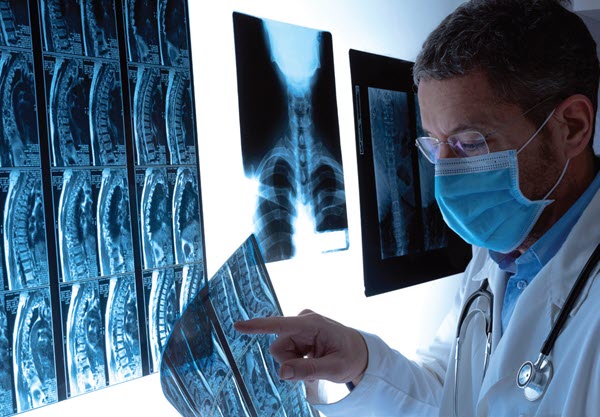Neurosurgery Coding Alert
Spinal Fusion, Part 2: Remember Complex Coding Rules for Surgery
Got evidence of presurgical treatment attempts? Include it on the claim. Last month, we ran down the basics of spinal fusion coding: Different surgical approaches and how to choose a code for spinal fusions using anterior interbody, lateral interbody, posterior interbody, and anterior/anterolateral techniques. This month, we’ll take a look at how your surgeon would reach the decision to perform a spinal fusion. Then, we’ll look at coding conventions for the remaining techniques: lateral extracavitary and posterior/posterolateral/lateral transverse. Information comes courtesy of Deni Adams, CPC, CPB, CPPM, CEMC, CPEDC, CCA, director of coding and implementation services at Kaleidoscope Health Systems in Minneapolis, during her presentation “Intro to Spinal Fusion Coding” at HEALTHCON Regional 2023 in Washington, D.C. E/M, Imaging, Conservative Tx Predate Spinal Fusions A surgeon decides that a patient needs a spinal fusion based on several factors. Here’s how they make that determination: Evaluation and management (E/M): The physician will always start the road to spinal fusion surgery with an E/M service. During this encounter, the surgeon will evaluate the patient’s symptoms, such as chronic back or neck pain, weakness, numbness, or tingling in the extremities, and difficulty walking or performing daily activities. They will also conduct a thorough physical examination to evaluate the patient’s range of motion, muscle strength, reflexes, and any signs of spinal instability or deformity. If the case is especially complex, the surgeon might also consult with other specialists — such as neurologists, pain management physicians, or physical therapists — to ensure a comprehensive evaluation. Diagnostic imaging: If the surgeon suspects a pressing spinal issue, they will use imaging tests to assess the structural abnormalities of the spine. These tests could be X-rays, magnetic resonance imaging (MRI), or computed tomography (CT) scans. The images from these tests will provide detailed information about herniated discs, spinal stenosis, spondylolisthesis, or other conditions that may require fusion. Failed conservative treatments: Surgeons will typically consider a spinal fusion after nonsurgical treatments have been exhausted or proven ineffective. These more conservative treatments could include physical therapy (PT), pain medications, spinal injections, or other conservative measures. If these treatments fail to alleviate the patient’s symptoms, the surgeon might suggest a spinal fusion. Report These Codes for Lateral ExtracavitaryApproach Once spinal fusion surgery is decided, coders will need to move to a different section of the CPT® book to choose their codes. When it is indicated that the surgeon used a lateral extracavitary technique, Adams pointed to the following codes: During this surgery performed through a posterior surgical incision, paraspinous muscles are exposed and lifted off the spinous processes, then divided and lifted off the ribs. In the thoracic region, the corresponding rib is dissected from the intercostal muscles and resected in one piece from the curve to the costovertebral connection. The surgeon removes the transverse process, facet, and pedicle anterior to the paraspinous muscles to gain access to the dura and vertebral body. Remember that each of these codes is for a single interspace, Adams said. Report These Codes for Posterior/Posterolateral Technique If, however, notes indicate that the surgeon performed a spinal fusion using posterior/posterolateral technique, Adams said to note the following codes: Adams had advice for coders reporting these codes for posterior/posterolateral approach spinal fusions: 

Related Articles
Neurosurgery Coding Alert
- CPT® 2024:
Vertebral Body Tethering, Device Insertion Highlight New Codes
CPT® will also revise these revision/removal codes. The list of new, revised, and deleted codes [...] - CPT® 2024:
Office/Outpatient E/M Descriptors Get Important Revision
Experts: CPT® made changes to parallel other E/M codes. The new CPT® code book will [...] - Surgery:
Spinal Fusion, Part 2: Remember Complex Coding Rules for Surgery
Got evidence of presurgical treatment attempts? Include it on the claim. Last month, we ran [...] - You Be the Coder:
Do This on Guidance With Intervertebral Aspiration
Question: Encounter notes indicate that the surgeon performed percutaneous intervertebral aspiration for diagnostic purposes. During [...] - Reader Questions:
Drill Down to Find Proper Neck Fx Dx
Question: Encounter notes indicate that the surgeon performed an office evaluation and management (E/M) service [...] - Reader Questions:
Check for This Element to Correctly Code Dural Leak Repairs
Question: Encounter notes indicate that the surgeon performed repair of a dural leak. What is [...] - Reader Questions:
Confused About Hydrocephalus Dx Codes? Check This Out
Question: What are the differences among the hydrocephalus diagnosis codes in ICD-10? Tennessee Subscriber Answer: [...] - Reader Questions:
Uncertain Dx Might Factor Into MDM
Question: Does an undiagnosed new problem with uncertain diagnosis automatically translate to a moderate level [...]




